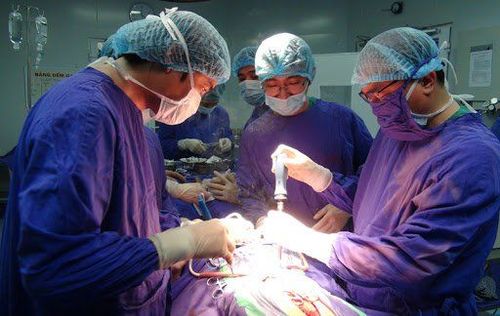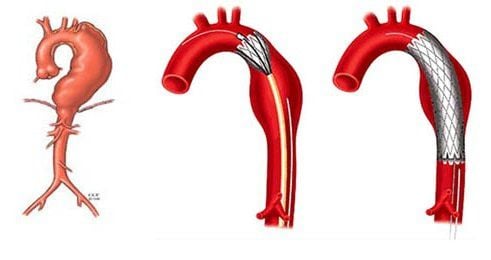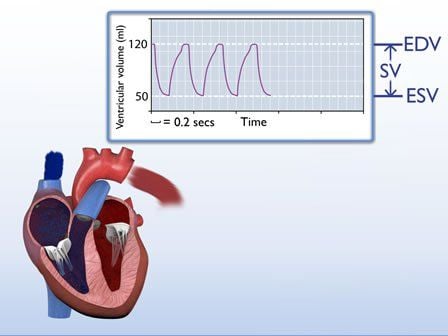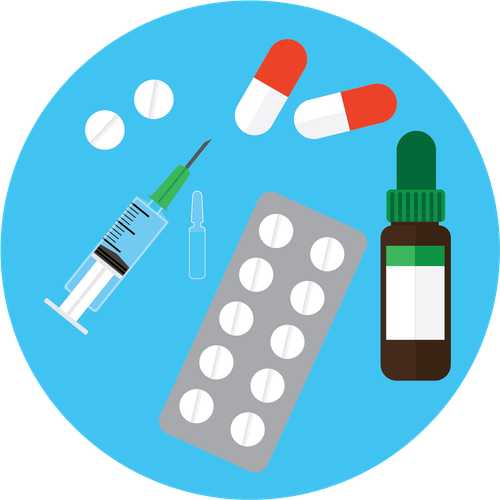This is an automatically translated article.
Vascular disease is the leading cause of disability and death in the elderly. Currently, with the development of medicine, many methods of treating this pathology have been applied by doctors. In which vascular surgery method is performed safely, effectively and reduces complications later.1. Overview of vascular disease
Vascular diseases are divided into two groups: diseases that damage the arteries and those that damage the veins.1.1. Vascular disease that damages the arteries is usually caused by the deposition of atherosclerotic plaques on the artery walls. These plaques are made up of cholesterol, calcium, and fibrous tissue. The more plaque deposits, the narrower and harder your arteries will become. The result is a blockage of blood vessels and leads to a reduction in blood supply to the organs or parts of the body that are nourished by those blood vessels.
Depending on where the artery is damaged , you may have the following symptoms:
Stroke Vascular necrosis Intermittent claudication eg, muscle pain when walking Kidney failure or other organ failure Aneurysm Vascular (Causes weakening of the artery wall which can rupture and cause death) 1.2. Vascular disease that damages the veins includes varicose veins and deep vein thrombosis:
Varicose veins: Usually occurs with the veins in the legs. These veins become dilated and pooled with blood, causing leg pain and ulcers that don't heal. Deep vein thrombosis: This is a condition caused by blood clots forming in the blood vessels. If these clots break off and travel to the lungs, they will travel up the pulmonary artery causing a pulmonary embolism and possibly death. 1.3. How is vascular disease treated? Vascular disease treatments include:
Basic non-drug measures: Doctors give advice on lifestyle changes such as quitting smoking, eating right and controlling factors such as obesity cholesterol, diabetes. Drug treatment: Your doctor will consider medication, such as low-dose aspirin, to prevent blood clots and treat intermittent claudication. Vascular surgery.
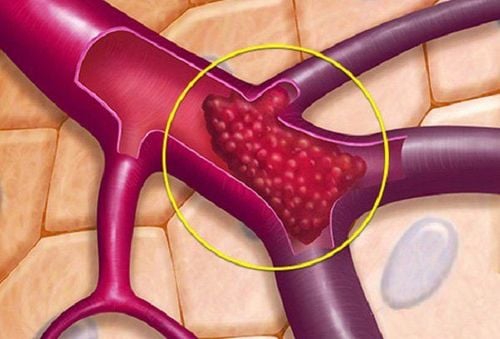
Phương pháp phẫu thuật cắt mạch máu được chỉ định điều trị một số bệnh mạch máu
2. What is vascular surgery?
Vasectomy is a procedure performed to treat and prevent diseases of the arteries, veins, and lymph vessels.Vascular disease affects many organs of the body. Therefore, vascular surgery can be performed on the aorta and the arteries and veins in organs such as the neck, abdomen, pelvis, legs, and arms. Patients can be treated by general practitioners including vascular surgeons, radiologists, vascular internists, vascular technicians.
Vasectomy is done in the following cases:
Aneurysm disease, eg aortic aneurysm. Angioplasty and stenting include procedures on the renal artery. Vasectomy and endarterectomy of non-coronary arteries. Surgical removal of a blood clot in the lung. Varicose veins surgery.
3. How is vascular surgery performed?
Vascular surgery includes two techniques: open vascular surgery and endovascular surgery. Depending on the patient's condition, the doctor will choose the most effective method of implementation. Endovascular surgery often has advantages over open-vascular surgery such as:Recovery time after surgery is faster than open-vascular surgery. Complications are less common because this technique involves small incisions, sometimes just one incision to access the treatment area. 3.1. Techniques of open vascular surgery Open vascular surgery includes the following techniques:
Techniques to repair blood vessels directly by suturing. Endarterectomy (Removal of occlusive plaque) Bypass technique (Use of the patient's main blood vessel or an artificial vessel). Open vascular surgery can cause postoperative complications as follows:
Allergies or other reactions to anesthetics. Bleeding after surgery. A blood clot occurs. Heart attack or arrhythmia. Surgical site infection. 3.2. Endovascular surgery techniques. Endovascular surgery includes the following methods:
Angioplasty and stenting: Angioplasty of the narrow artery with a balloon, and then placing a stent in the artery to widen the lumen. Intravascular stenting: Intravascular lesions are covered with a solid layer by placing a vascular graft into the lumen. Catheter thrombolysis: Dissolving the clot by injecting medication into the treatment area. Placement of a vena cava filter: A vena cava filter is a mechanical device that is inserted into a vein to prevent blood clots from moving from the leg veins to the pulmonary artery, causing pulmonary embolism. Complications of endovascular surgery include:
The stent is blocked or broken. Bleeding around the endovascular stent. Surgical site infection. Fever. Damage to blood vessels or surrounding organs. Rarer complications such as ruptured artery, ruptured aneurysm. To reduce complications after vascular surgery, you should inform the doctor treating the following symptoms:
Tell your doctor if you are allergic to anesthetic or contrast dye. Follow your doctor's instructions for physical activity and wound care after surgery. Tell your doctor right away if you experience bleeding, infection, fever, or increased pain. Use medication exactly as directed by your doctor.
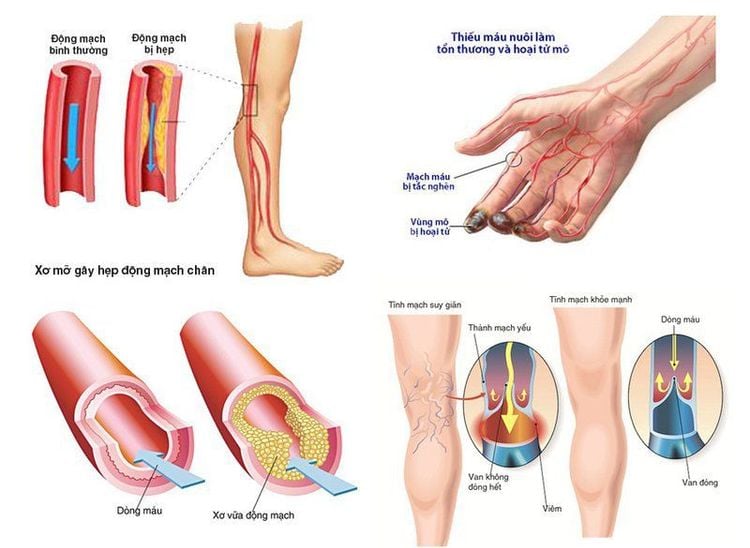
Phẫu thuật cắt mạch máu ngày càng tăng và đem lại hiệu quả điều trị cao
4. What preparation is required before vascular surgery?
Before performing vascular surgery, your doctor will give you specific instructions. These instructions may include:Stop taking anticoagulants . Do not eat or drink for at least eight hours before surgery. Do not take aspirin for a week before surgery.
5. How long does it take to recover from vascular surgery?
For open vascular surgery, you may be prescribed a hospital stay of 5 to 10 days and a recovery time at home about 3 months. You need to keep the surgical area clean and dry.For endovascular surgery, you will be hospitalized for 2 to 3 days and the recovery time at home is about 4 to 6 weeks.
Vasectomy is not only a life-saving procedure, it also reduces the risk of developing other serious health problems such as stroke, heart attack, kidney disease... Along with the With the development of medicine, surgical techniques to cut blood vessels are increasing and bringing high treatment efficiency.
Vinmec International General Hospital is one of the hospitals that not only ensures professional quality with a team of leading medical doctors, modern equipment and technology, but also stands out for its examination and consultation services. comprehensive and professional medical consultation and treatment; civilized, polite, safe and sterile medical examination and treatment space.
Thanks to good medical quality, the hospital is always trusted by customers and highly appreciated by professionals.
Please dial HOTLINE for more information or register for an appointment HERE. Download MyVinmec app to make appointments faster and to manage your bookings easily.
Reference source: healthgrades.com - fvhospital.com



